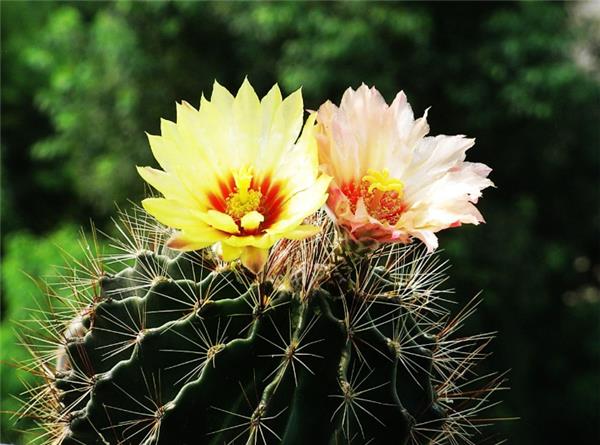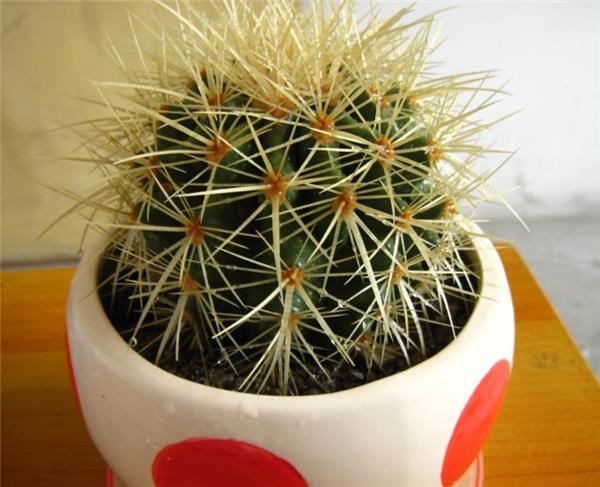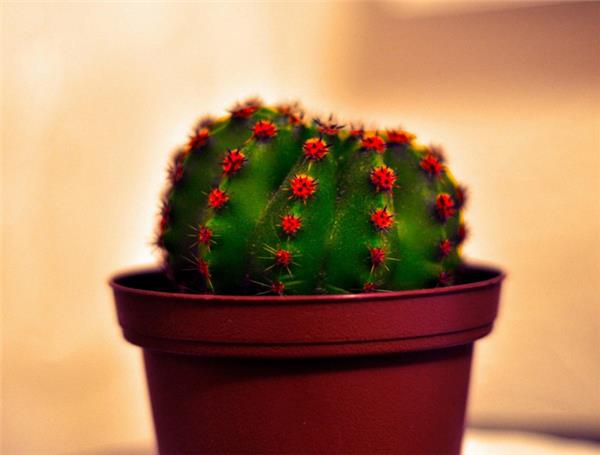How often is the cactus watered?
Fairy ball is one of the well-known ornamental flowers, tenacious vitality, easy to feed, so it is also the first choice for many flower lovers. So how often is the cactus watered?

How often is the cactus watered?
The cactus is usually watered every two weeks in spring and autumn, because the spring weather is clear and the climate is warm, but the water content in the air is not low. The cactus can absorb water and nutrients from the air through its leaves (thorns). So watering once every two weeks is enough, too much will be drowned.
In summer, the weather is hot, the climate is dry, and there is little moisture in the air, so it is usually watered once a week. If it is an office potted cactus and grows in an air-conditioned environment, it is best to water it again for about 10 days.
In winter, the cactus is cold and foggy in the air, so there is no shortage of water in the cactus at this time, but there will still be water evaporation in the soil. In order to ensure that the roots have enough water, they are usually watered once every two months. Watering twice a winter is almost enough. Special reminder, pay attention to the warm and cold protection of cactus in winter. It is a plant that is afraid of cold but not of heat.

In short, the watering of cactus should follow the following principles:
1. If the soil is not dry or irrigated, it will be thoroughly watered.
2. No watering in winter, less watering in summer
3. Balls that have just been bought home are not watered; balls that have just been basked in the sun are not watered; balls in early spring are not watered; balls that have just changed pots and newly inserted balls are not watered.
Through effective water control, the cactus can strengthen its physique, reduce illness, grow healthily, and produce beautiful flowers.

Matters needing attention in watering cactus
Cactus belongs to the cactus family, commonly known as grass balls, growing in desert areas, like high temperature and dry climate. The cactus ball is native to the grasslands of South America. The cactus is also a flowering plant, and its flowers are white, red and yellow. Proper watering of the cactus helps the cactus blossom. The cactus blossoms in summer. The summer weather is relatively dry and hot. In order to promote the cactus to bloom in summer, it is necessary to water the cactus once a week, and wet the cactus every time.
The cactus is watered all the year round. When watering the cactus in spring and autumn, it only needs to be watered once every half a month, because the weather in spring and autumn is warmer and there is water in the air. Cactus can absorb water from the air through its thorns to maintain its moisture and nutrition. In winter, the cactus does not need to be watered, because the winter weather is relatively cold and the air is foggy, so there is no shortage of water at this time. In the relatively cold weather in winter, the cactus is afraid of cold and hot plants, so it is necessary to protect the cactus from the cold in winter.
Cacti like sunny places, but exposure will slow down the growth of cactus, so if you want the cactus to grow well and fast, you can choose a cool place for the cactus when the sun is overheated. The cactus originally grew in a relatively arid desert, and its root system has a strong ability to absorb water, so don't pour too much water when raising the cactus, too much water will cause the root of the cactus to fester. In general, large cactus will not die even if it is not watered for a year or two.

When raising cactus, we should use sand to raise cactus, because the soil of sandy soil is relatively loose. The sand practice of the cactus is to put a layer of soil under the sand so that the sand is on the top and the soil is on the bottom. Because it helps to stay hydrated. When applying phosphate fertilizer to the cactus, do not apply too much at one time, too much phosphate fertilizer will make the concentration of the soil solution greater than the concentration of the cactus root cells, water outflow, resulting in the dehydration of the cactus.
Cactus is a kind of plant that is not afraid of lack of water, but afraid of too much water. too much water will lead to the death of the root cells of cactus due to lack of oxygen, so in the process of breeding, we should be careful not to let the cactus get drenched in the rain, even if we are caught in the rain. The optimum growth temperature of cactus is 20-35 degrees. Most species of cactus prefer the temperature with large temperature difference between day and night, growing at 35 degrees during the day and about 20 degrees at night, which is conducive to the production and accumulation of organic matter, thus promoting the exuberant growth of cactus.
The cactus is native to the desert Gobi in arid areas, where there is a shortage of water. the cactus belongs to the cactus family and has leaves at first, but the harsh environment forces the cactus to refuel and evolve. only by shrinking the leaves into needles can effectively reduce water evaporation, while fat stems store water. If we adapt to life in the desert, we can't change its living environment. Attention should be paid to watering.
Drain the cactus in time even if caught in the rain. The optimum growth temperature of cactus is 20-35 degrees. Most species of cactus prefer the temperature with large temperature difference between day and night, growing at 35 degrees during the day and about 20 degrees at night, which is conducive to the production and accumulation of organic matter, thus promoting the exuberant growth of cactus.
The cactus is native to the desert Gobi in arid areas, where there is a shortage of water. the cactus belongs to the cactus family and has leaves at first, but the harsh environment forces the cactus to refuel and evolve. only by shrinking the leaves into needles can effectively reduce water evaporation, while fat stems store water. If we adapt to life in the desert, we can't change its living environment. Attention should be paid to watering.
Related
- Wuhan Hospital Iron Tree Blooming Result Was Instantly Frightened by the Gardener Master
- Which variety of camellia is the most fragrant and best? Which one do you like best?
- What is the small blue coat, the breeding methods and matters needing attention of the succulent plant
- Dormancy time and maintenance management of succulent plants during dormancy
- Minas succulent how to raise, Minas succulent plant pictures
- What are the varieties of winter succulent plants
- How to raise succulent plants in twelve rolls? let's take a look at some experience of breeding twelve rolls.
- Attention should be paid to water control for succulent plants during dormant period (winter and summer)
- Watering experience of twelve rolls of succulent plants
- Techniques for fertilizing succulent plants. An article will let you know how to fertilize succulent plants.



